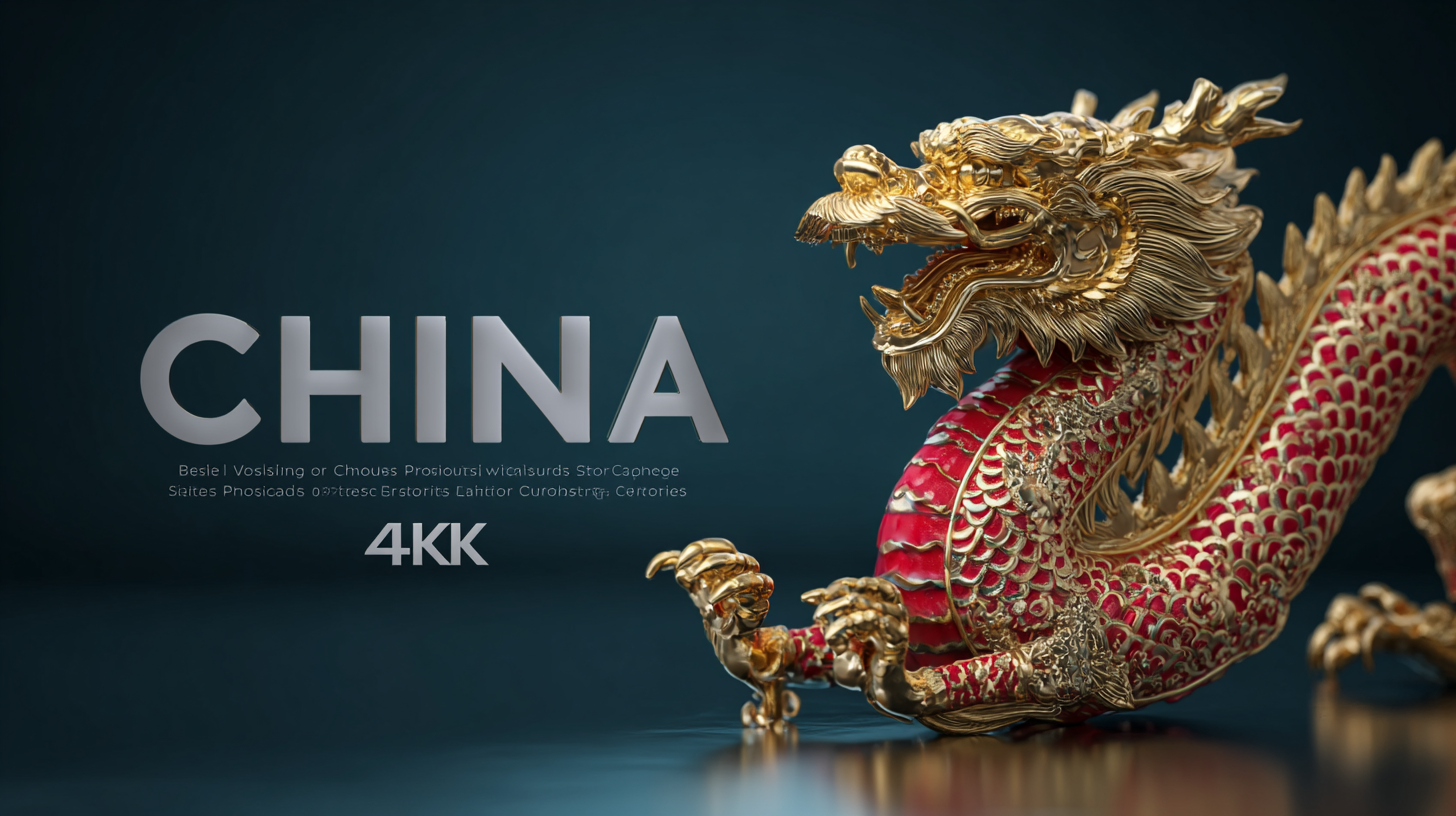
Maximizing Value with Best China Products Through Superior After Sales Service and Lower Repair Costs
In today's competitive market, the choice of products often hinges not only on quality and price but also on the level of after-sales service offered. With China's reputation as a manufacturing powerhouse, many businesses are now looking to maximize the value derived from Chinese products by leveraging superior after-sales support and minimizing repair costs. The significance of after-sales service has never been more pronounced, as consumers seek assurance and reliability in their purchases. By focusing on the importance of effective after-sales strategies, companies can enhance customer satisfaction and foster long-term loyalty. This blog will explore the various types of after-sales services available, highlight how they contribute to reducing repair costs, and demonstrate how businesses can tap into the potential of China's product offerings by prioritizing exceptional service delivery. As the global market evolves, understanding the intricate balance between product excellence and customer support is crucial for sustaining competitive advantage, particularly when engaging with China's vast array of products.

Understanding the Importance of After Sales Service in Enhancing Product Value
After sales service plays a pivotal role in enhancing product value, particularly in the highly competitive landscape of consumer goods. According to a report by the Service Council, effective after sales service can increase customer retention rates by up to 90%. This statistic illustrates that when customers feel supported post-purchase, they are more likely to repurchase and recommend products to others, directly contributing to brand loyalty and long-term profitability.
Moreover, lower repair costs resulting from quality after sales support can significantly enhance the overall value proposition of products. A study from the Aberdeen Group highlights that companies with robust after sales service platforms experience 25% fewer warranty claims and 30% lower repair costs compared to their counterparts lacking such services. This not only fosters a positive customer experience but also translates into reduced operational expenses for businesses, ultimately maximizing the value derived from China's best products. By prioritizing after sales service, companies can create a sustainable competitive advantage that resonates with consumers seeking both quality and reliability in their purchases.
Maximizing Value Through After Sales Service
This chart illustrates the correlation between after sales service quality and customer satisfaction, showcasing its impact on perceived product value.
The Role of Lower Repair Costs in Boosting Customer Satisfaction and Loyalty
In today's competitive market, lower repair costs play a crucial role in enhancing customer satisfaction and fostering brand loyalty, especially when dealing with high-quality Chinese products. According to a recent survey by JD Power, over 75% of consumers indicated that they prioritize low repair expenses when choosing a product, as it directly impacts the overall ownership experience. When companies invest in efficient after-sales services and repair solutions, they not only save their customers money but also build long-lasting relationships rooted in trust.
Tips: To maximize customer satisfaction, businesses should consider implementing a transparent warranty process that outlines repair costs and processes clearly. Additionally, offering a comprehensive troubleshooting guide can empower customers to resolve minor issues on their own, further enhancing their overall experience.
Moreover, industry reports from global market research firms indicate that organizations with robust after-sales services and lower repair costs see a 20-30% increase in repeat purchases. Customers who feel supported and valued are more likely to promote the brand through word of mouth, thus driving new business. Prioritizing these aspects can create a win-win scenario for both customers and manufacturers in the dynamic landscape of Chinese products.

Differentiating Quality: How China Products Compete on Global Standards
In the competitive landscape of global manufacturing, Chinese products have increasingly established a reputation for quality, often exceeding expectations on international standards. A key factor in their ability to compete lies in the meticulous attention to detail during production and a robust quality control process. As more consumers and businesses shift their focus to these high-value offerings, the perception of "China products" is evolving from budget alternatives to viable solutions that meet rigorous quality benchmarks.
**Tip: To differentiate your offerings, consider investing in transparent sourcing and production practices. This not only enhances your credibility but also builds consumer trust in the quality of your products.**
Moreover, exceptional after-sales service plays a pivotal role in setting Chinese products apart. Companies that prioritize customer satisfaction by providing reliable support—such as timely repairs and maintenance—are creating a loyal customer base. Lower repair costs associated with Chinese products do not just serve as an attractive advantage; they are integral in enhancing the overall value proposition.
**Tip: Implementing a comprehensive after-sales support system can lead to significant cost savings and foster long-term relationships with clients. Regular follow-ups and feedback collection can further bolster your service model, ensuring continuous improvement.**
Maximizing Value with Best China Products Through Superior After Sales Service and Lower Repair Costs
| Product Category | Average Repair Cost ($) | After Sales Service Rating (Out of 5) | Customer Satisfaction (%) | Warranty Period (Years) |
|---|---|---|---|---|
| Electronics | 75 | 4.5 | 90 | 2 |
| Home Appliances | 60 | 4.0 | 85 | 3 |
| Textiles | 30 | 4.8 | 92 | 1 |
| Automotive Parts | 120 | 4.3 | 88 | 2 |
| Toys | 20 | 4.7 | 95 | 1 |
Strategies for Implementing Superior After Sales Support in Competitive Markets
In today's fiercely competitive markets, implementing superior after-sales support is crucial for enhancing customer satisfaction and retention. Research indicates that effective after-sales service can increase customer loyalty by 30%, making it a pivotal element in maximizing the value of China’s products. Companies must focus on creating a seamless support experience, utilizing technology to facilitate faster response times and resolutions. For instance, incorporating chatbots can reduce customer service costs by up to 30% while ensuring timely assistance, reflecting a dual benefit of efficiency and cost-effectiveness.
Another strategy involves closely monitoring repair costs through streamlined supply chain management. According to a report by the International Journal of Supply Chain Management, optimizing repair processes can decrease repair costs by approximately 25%. Companies that invest in training their technicians and adopting predictive maintenance technologies find they not only enhance service quality but also significantly lower overall expenses. By aligning after-sales service with market demands and leveraging data analytics, businesses can anticipate customer needs, reduce downtime, and ultimately deliver a superior product experience that fosters long-term relationships and drives revenue growth.
Case Studies: Successful Brands Leveraging After Sales Service in China
In recent years, many brands have recognized the strategic importance of
after-sales service,
particularly in the competitive landscape of China. A study by McKinsey & Company highlighted that
70% of customers are willing to pay more for superior
customer service experiences. This statistic underscores the potential for brands to differentiate themselves
through exceptional after-sales support.

Similarly, the automotive industry provides compelling case studies on leveraging after-sales service. According to a report by JD Power, brands that prioritize service quality, such as BMW and Audi, consistently outperform their competitors in customer retention. These brands have established effective feedback loops to address customer issues promptly, while also keeping repair costs lower through efficient supply chain management. Such practices not only enhance brand loyalty but also predictably improve profitability, proving that a well-executed after-sales strategy is indispensable in maximizing value in the ever-evolving Chinese market.
